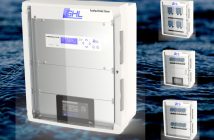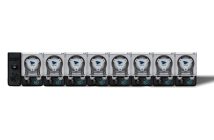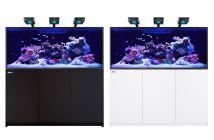
This is a continuation from the article, Save Aquariums in a Power Outage: Keep Fish and Reptile Pets Safe with a Power Inverter (Part 1).
Doing some initial research, my wife and I found that buying a power inverter to keep our reptile and fish devices running during a power outage was the right choice. Now came the challenging part: deciding which power inverter would fit our needs.
To our surprise, there were loads of options to consider when buying a power inverter for our apartment. Most importantly, we had to consider budget and output ability. Furthermore, we found out there are two main types of power inverters: Modified Sine Wave and Pure Sine Wave.
Our first concern was price. We had quite a bit of money invested in our pets and their habitats, so if we were taking a proactive step to keep them safe, we were willing to spend a little money on peace of mind. However, we couldn’t justify making many other sacrifices in order to afford something we, hopefully, would never have to use. For our needs, a sufficient power inverter to run all of our pets’ devices looked to run between about $150 and $1,500, which was quite the range.
Next, because we were most concerned with running our lizard and fish devices and not the rest of the devices in our apartment, we were happy with a power inverter that would run about 800 watts easily. After doing our research, we were confident that a 1000-watt inverter would run all the devices efficiently without any hiccups.
Finally, we had to look into the difference between Modified Sine Wave Power Inverters and Pure Sine Wave Power Inverters. For a brief explanation on the difference, I found this video to be helpful. In short, a Modified Sine Wave Power Inverter will run most devices without any issue. However, the type of power provided is not identical to the power that comes out of the power outlets in homes. I’m no expert in this area, but I found that some devices (such as ones with varying power levels) can have difficulty running from a Modified Sine Wave Power Inverter. A Pure Sine Wave Power Inverter, on the other hand, provides power that is identical to the power that comes out of common power outlets in homes. After doing some research, we felt more confident in the capability of the Pure Sine Power Inverter, especially if a power outage proved to last a few days and we would need to plug in other devices to the inverter. The difference in price was noticeable, but not crippling for our peace of mind in keeping our pets safe and their devices working identically to how they do when the power is on. Please know, a Modified Sine Wave Power Inverter likely would have operated just fine, but we opted for the Pure Sine.
All things considered, we found the COTEK 1000 Watt 12 Volt Pure Sine Wave Inverter to be the right choice for us (and more importantly for keeping our fish and lizards safe during a power outage). It had features we believed were important for our situation, such as a cooling fan, a 2-year warranty and an energy conservation mode. Also, we were able to get information on the types of batteries we’d need to ensure we had enough power to last us a few days in the event of a big power outage.
Now, instead of running to the cupboard for towels and blankets every time the power goes out, we can turn to our trusty power inverter with confidence. In the summer, we can have power to keep our aquariums cool and pumps running. In the winter, we can power our lizards’ heat rocks and run our aquarium water heaters to keep the water temperature consistently warm and comfortable for our fish.





